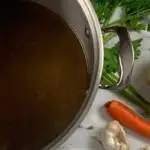
Homemade beef broth provides a much greater depth of flavor than anything you can buy from the store. I usually make a large batch of beef broth, divide it into quart portions, and freeze so I have it available when I need it.

Table of Contents
What is Beef Broth
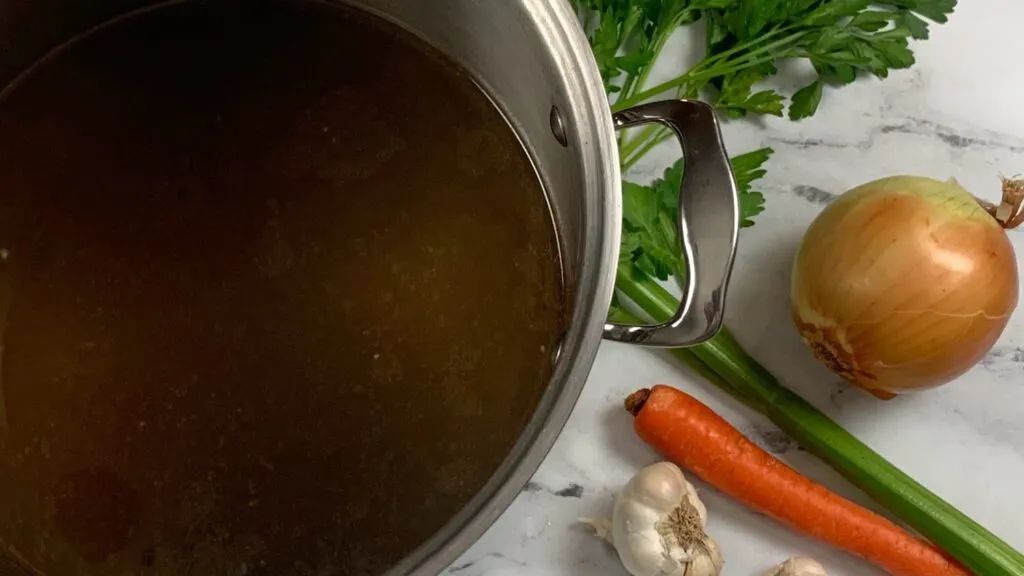
Beef broth is is made with meaty beef bones, mirepoix (onion, celery, and carrots), aromatics, and water. Typically the beef bones and veggies are roasted and then combined with the aromatics and water and simmered over low heat for several hours.
People often confuse beef broth with bone broth or beef stock. However, while they often use the same ingredients, there are differences between the three. The biggest difference is beef broth uses meaty beef bones while bone broth or beef stock use cleaned beef bones. Check out the following article for a more in-depth discussion on the difference between beef broth, beef stock, and bone broth: The 15 Best Substitutes for Beef Broth.
How Do You Make Homemade Beef Broth
While there is certainly more effort in making your own beef broth as opposed to buying some from the store, the end product is well worth the effort. Plus, most of the time spent is simmering the beef broth, which doesn’t require much effort. As an added bonus, your kitchen will smell amazing while the broth is simmering. Below are step-by-step instructions on how to make your own beef broth:
1. Preheat oven to 450 degrees and arrange the soup bones into a roasting dish.
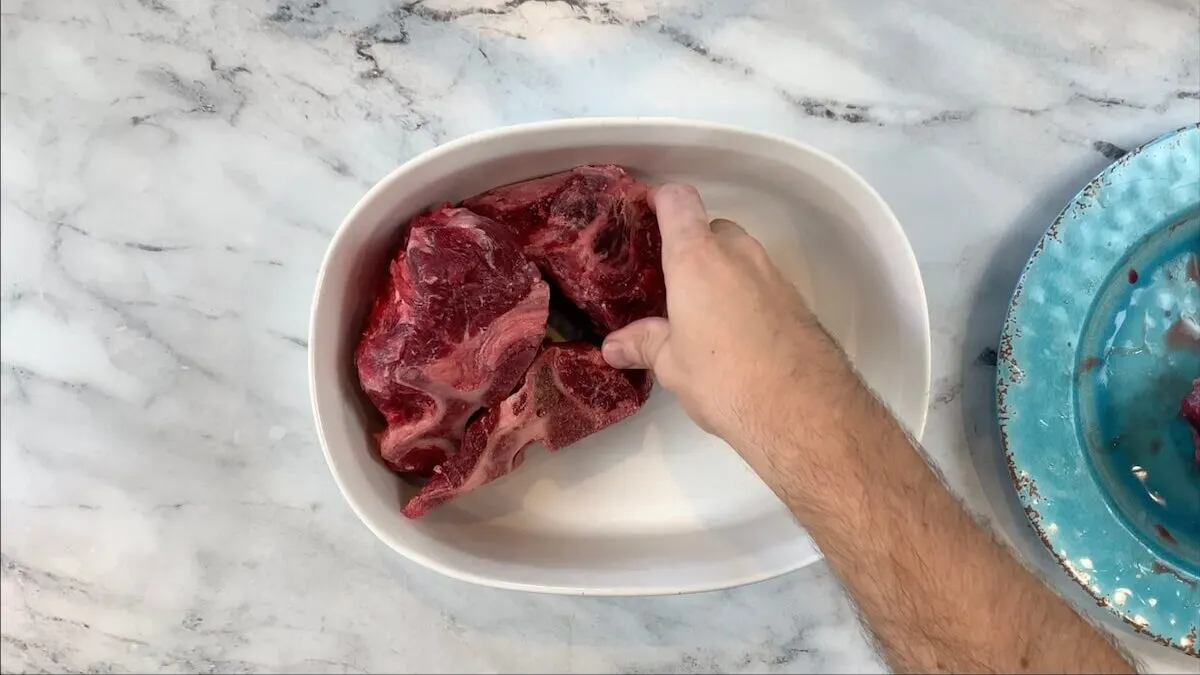
2. Remove the ends from the carrots and celery and cut the veggies into 3″ (7.5 cm) pieces. Remove the skin from the onion and cut into fourths. Add all veggies to a baking sheet.
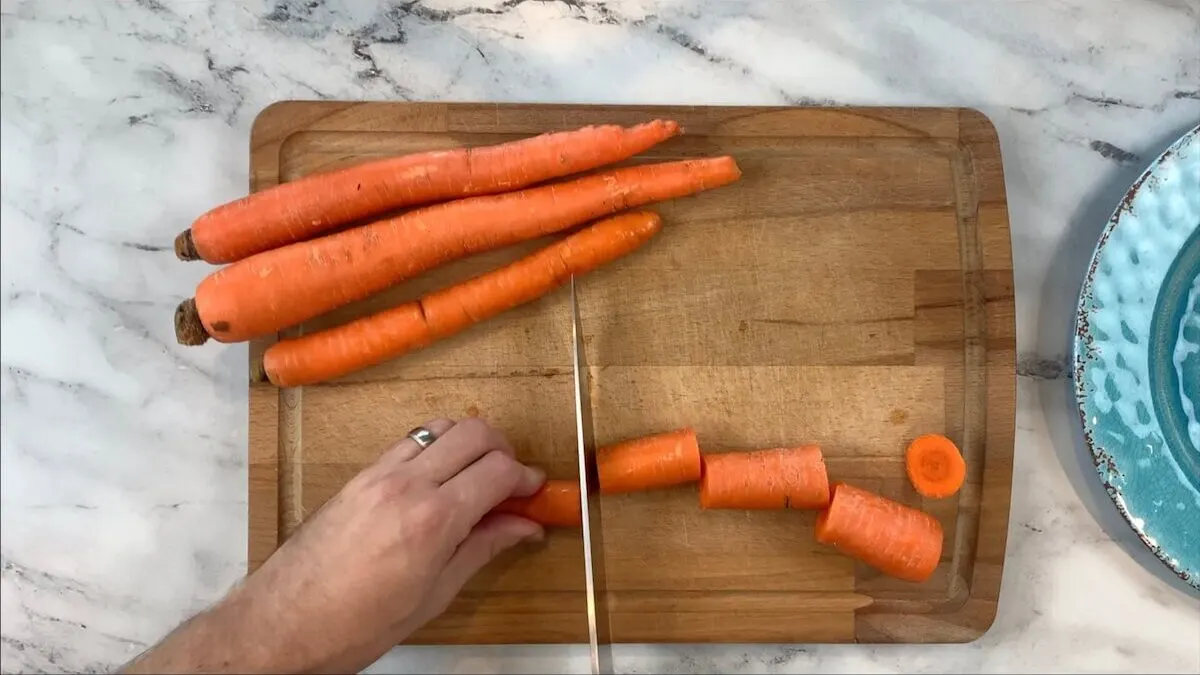
3. Roast soup bones for 60 minutes uncovered. After 30 minutes, add the veggies to the oven and roast the vegetables for the remaining 30 minutes uncovered.
4. Once done roasting, transfer the bones and vegetables to a large pot. I like to use a large pasta pot with a built in strainer. This makes it easier to strain the broth when it’s done simmering. I would use tongs or a slotted spoon to transfer the bones and vegetables first, then pour in the remaining liquids from the bottom of the roasting pan and baking sheet.

5. Use the cup of warm water and a plastic spatula to scrape the beef bits off the bottom of the roasting pan and add to the pot with the bones and veggies. This adds a rich, beefy flavor to the broth.
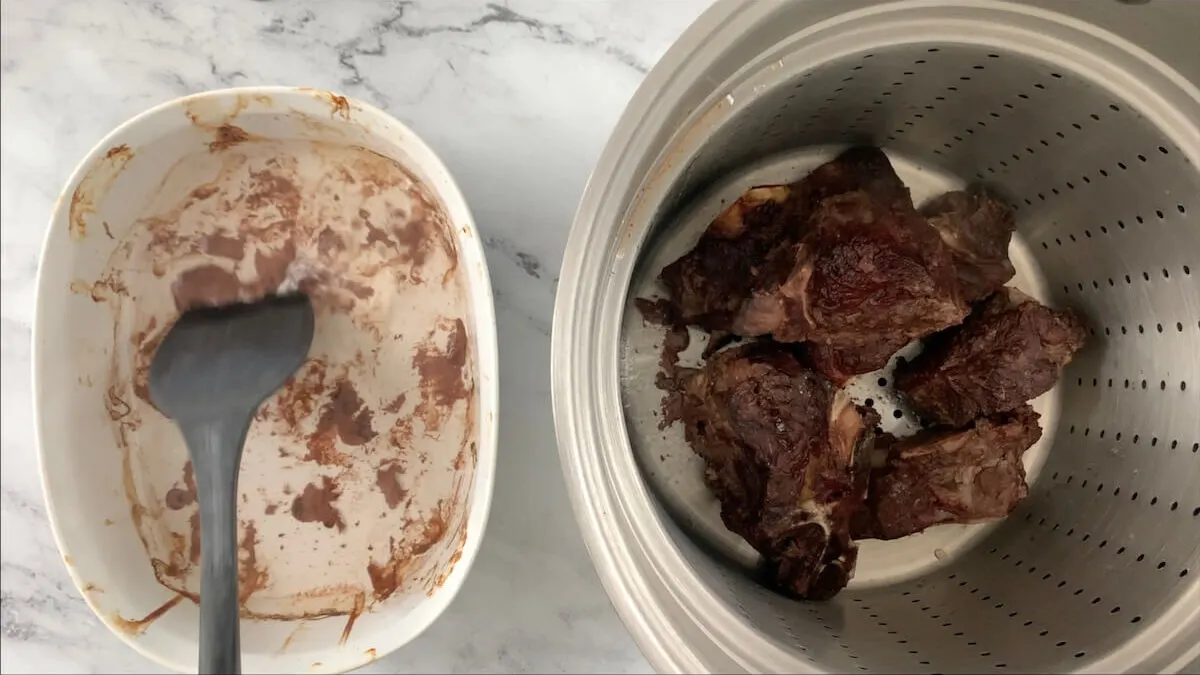
6. Fill the pot with just enough cold water to cover the bones and veggies and add the remaining seasonings. Once the water and seasonings are added, give the pot a good stir to mix everything together.
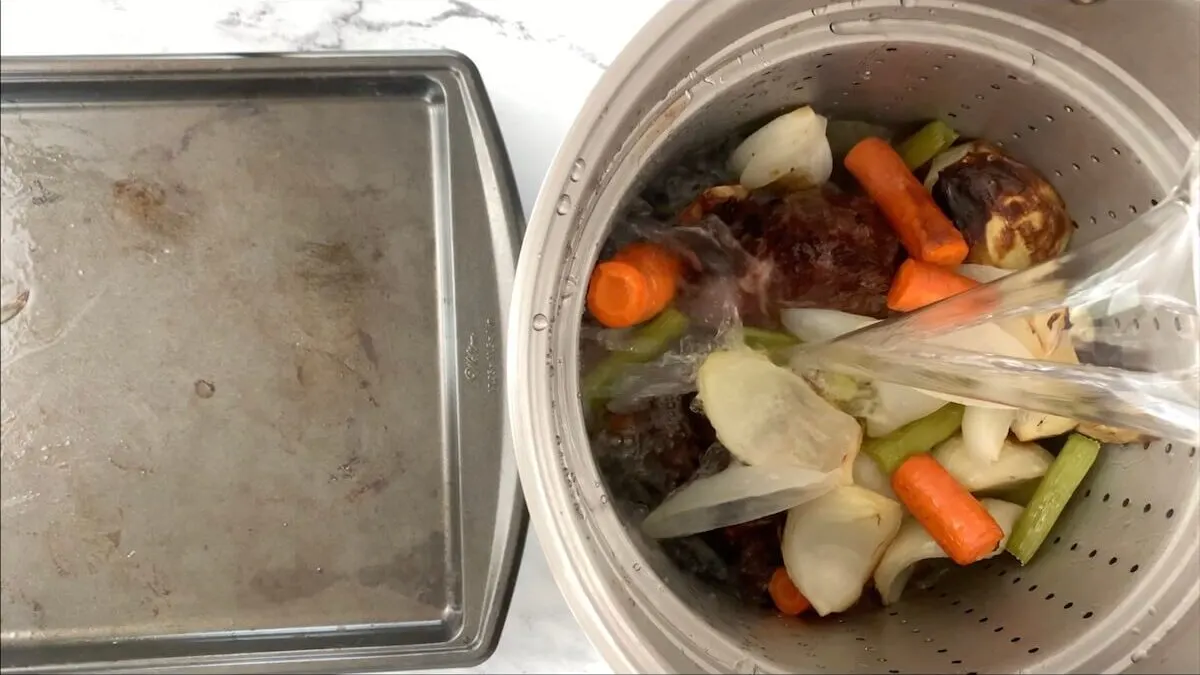
7. Uncovered, bring the water to a boil then reduce the heat to simmer for 4 to 5 hours. Make sure the ingredients are covered when it starts to simmer. Add water if necessary in the beginning.

8. Once done simmering, remove the pot from the heat and strain the broth. If you have a pot with a fitted strainer, this is as easy as lifting the strainer out of the pot. However, be sure to do so slowly to avoid splashing the hot broth onto yourself. If you don’t have a strainer already in your pot, you can place a strainer over a new pot and strain the broth into this new pot. Discard all the bones and veggies. Note: If you use a pot with a built in strainer, I usually strain again with a finer strainer to get the random peppercorns and other small bits.
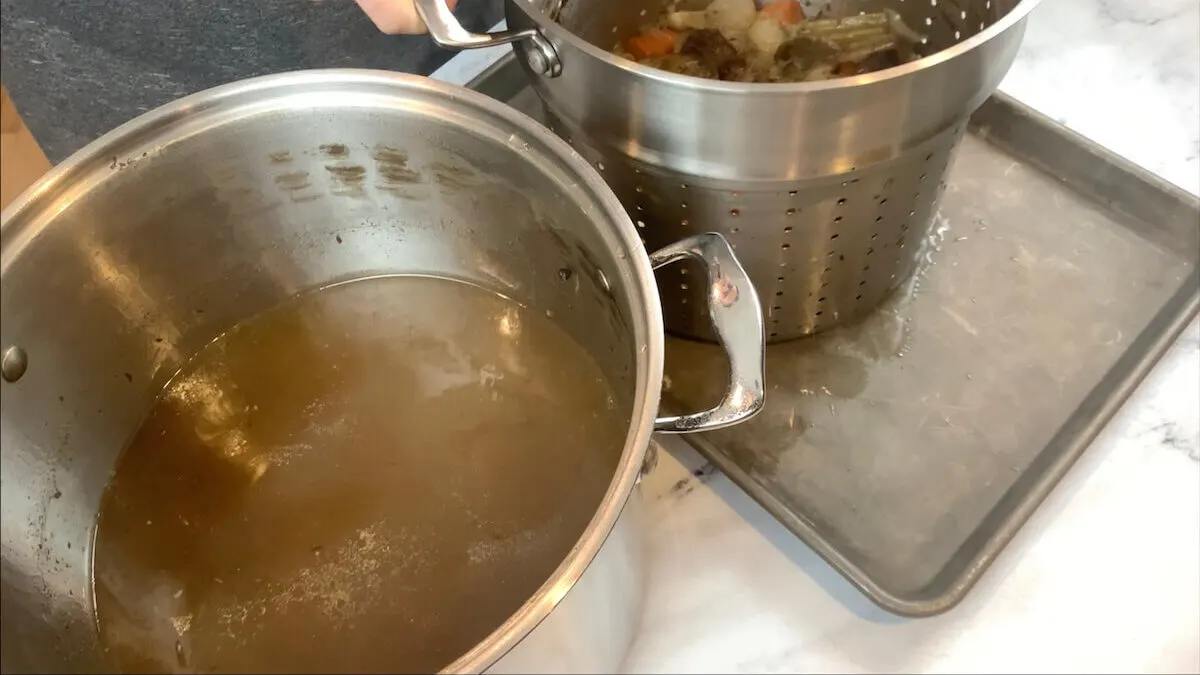
9. Transfer broth into a large bowl or two, cover, and chill in the fridge. Once chilled, skim the fat off the top of the broth before using.
10. Beef broth will be good covered in the fridge for up to 3 days or frozen for up to 6 months. Enjoy!
Check out the following article for a more thorough discussion on how to store beef broth safely: How Long Does Beef Broth Last in the Fridge? All Your Questions Answered.
Beef Broth Recipe
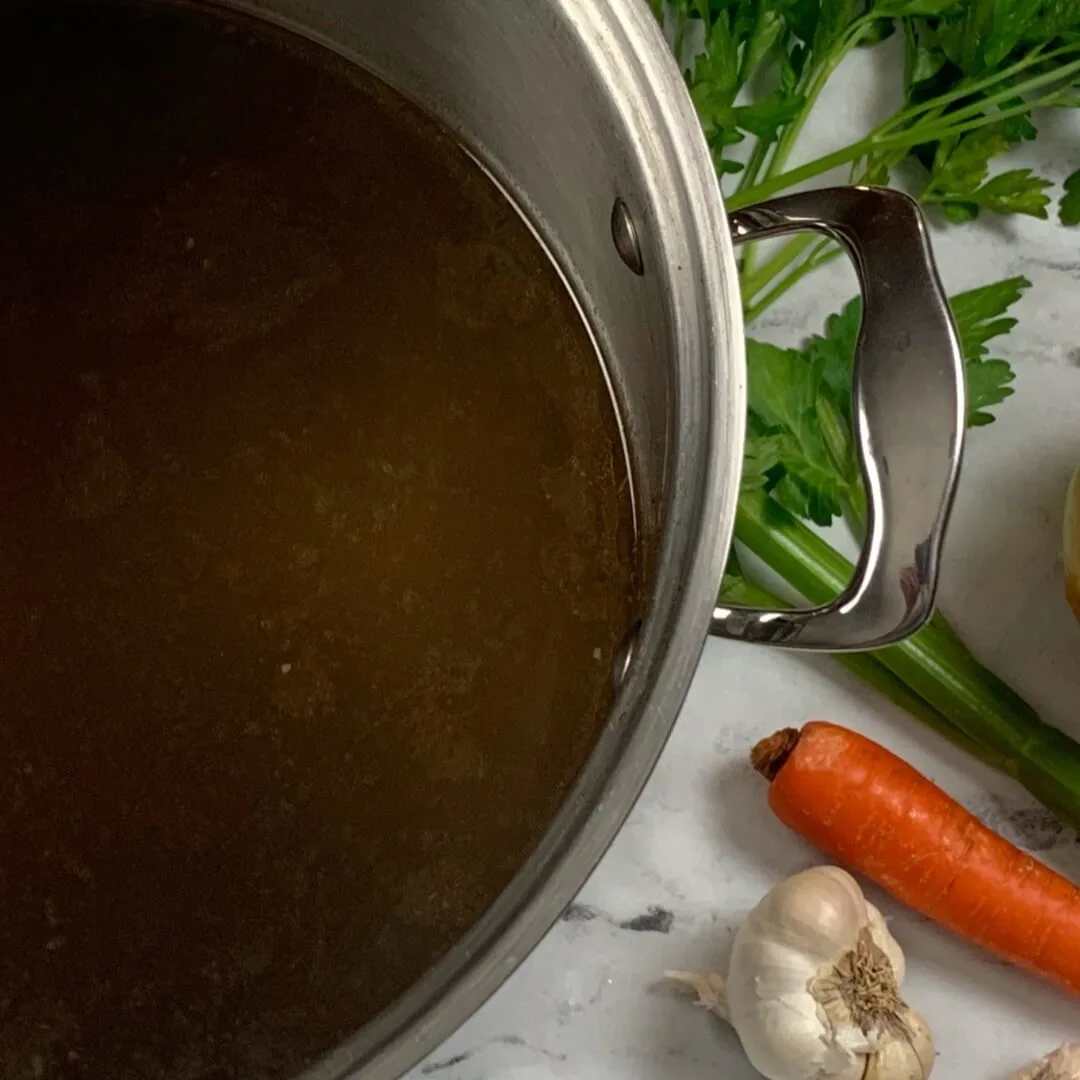
Beef Broth Recipe
Equipment
- 1 Large pot
- 1 Roasting pan
Ingredients
- 3 to 4 Pounds Meaty Beef Soup Bones
- 2 Onions Quartered
- 4 Ribs Celery Cut into 3" pieces
- 4 Carrots Cut into 3" pieces
- 1 tsp Dried Oregano
- 1 tsp Whole peppercorns
- 4 Cloves Fresh Garlic
- 4 Bay Leaves
- 5 Sprigs of Fresh Parsley
- 1 tsp Dried Thyme
- 1/2 tsp Salt
- 1/4 tsp Paprika
- 1 cup Warm water
- Cold Water
Instructions
- Preheat oven to 450 degrees and arrange the soup bones into a roasting dish
- Remove the ends from the carrots and celery and cut the veggies into 3" (7.5 cm) pieces. Remove the skin from the onion and cut into fourths. Then add all cut veggies to a baking sheet.
- Roast soup bones for 60 minutes uncovered. After 30 minutes, add the veggies to the oven and roast the vegetables for the remaining 30 minutes uncovered.
- Once done roasting, transfer the bones and vegetables to a large pot. I like to use a large pasta pot with a built in strainer. This makes it easier to strain the broth when it's done simmering. I would use tongs or a slotted spoon to transfer the bones and vegetables first, then pour in the remaining liquids from the bottom of the roasting pan and baking sheet.
- Use the cup of warm water and a plastic spatula to scrape the beef bits off the bottom of the roasting pan and add to the pot with the bones and veggies. This adds a rich, beefy flavor to the broth.
- Fill the pot with just enough cold water to cover the bones and veggies and add the remaining seasonings. Once the water and seasonings are added, give the pot a good stir to mix everything together.
- Uncovered, bring the water to a boil then reduce the heat to simmer for 4 to 5 hours. Make sure the ingredients are covered when it starts to simmer. Add water if necessary in the beginning.
- Once done simmering, remove the pot from the heat and strain the broth. If you have a pot with a fitted strainer, this is as easy as lifting the strainer out of the pot. However, be sure to do so slowly to avoid splashing the hot broth onto yourself. If you don't have a strainer already in your pot, you can place a strainer over a new pot and strain the broth into this new pot. Discard all the bones and veggies.Note: If you use a pot with a built in strainer, I usually strain again with a finer strainer to get the random peppercorns and other small bits.
- Transfer broth into a large bowl or two, cover, and chill in the fridge. Once chilled, skim the fat off the top of the broth before using.
- Beef broth will be good covered in the fridge for up to 3 days or frozen for up to 6 months. Enjoy!
Video
Nutrition
Frequently Asked Questions
Is beef broth gluten-free?
Homemade beef broth is naturally gluten-free. However, if you purchase from the store, you need to check the label as some brands of beef broth have fillers that contain gluten.
Is beef broth healthy?
Yes, beef broth contains protein, collagen, calcium, and other minerals, all of which are good for you.
How long does beef broth last in the freezer?
Homemade beef broth will last up to six months in the freezer.
Final Thoughts on Beef Broth
While beef broth takes a long time to cook, most of the time is spent simmering the broth, which you can do while watching the big game or spending time with your family. The end result is certainly worth the effort and will yield enough broth for several batches of soup or other recipes. Happy cooking!
Check out the following articles for more great soup and broth recipes
How to Make Authentic Japanese Dashi
Also, for more great videos subscribe to our YouTube Channel.
